Upgrading from iPhone 7 to iPhone 12: A Comprehensive Guide
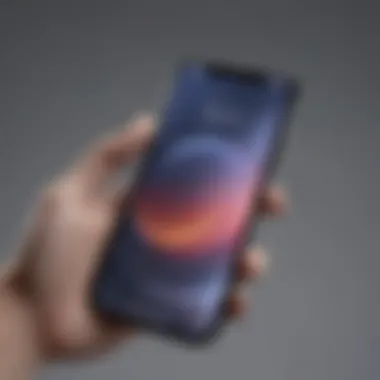
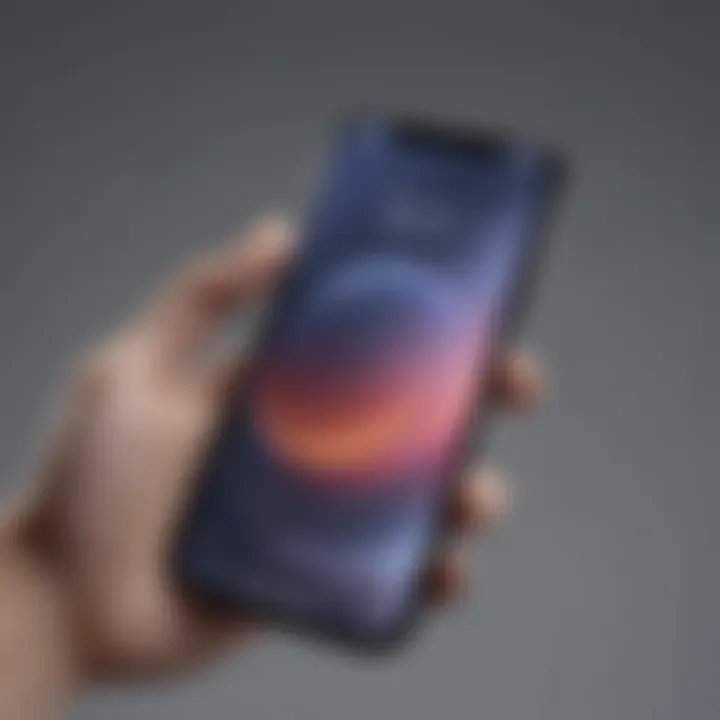
Intro
In the rapidly evolving world of smartphones, upgrading to a newer model can significantly enhance user experience. For those moving from the iPhone 7 to the iPhone 12, understanding the differences is vital. This guide outlines crucial aspects of the transition, ensuring a smooth upgrade.
Product Overview
Apple has consistently set benchmarks in the smartphone industry. The iPhone 12, released in 2020, showcases advancements that make it appealing for those using older models like the iPhone 7.
The iPhone 12 features a Super Retina XDR display, which offers stunning image clarity. It has an improved A14 Bionic chip, enhancing performance and efficiency.
Highlights of the iPhone 12 are:
- Dual-camera system: Enhanced photography with Night mode.
- 5G capability: Enables faster download speeds.
- Ceramic Shield: Offers better drop performance.
When contrasting with the iPhone 7, the iPhone 12 displays a considerable leap in technology and features. Key specifications such as battery life and processing power provide a more compelling option for modern users.
Performance and User Experience
The A14 Bionic chip in the iPhone 12 provides remarkable performance boosts compared to the iPhone 7’s A10 Fusion chip. Users can expect:
- Quicker app launches: Multi-tasking is seamless.
- Improved battery life: Despite the powerful processor, it lasts longer due to efficiency.
Feedback from iPhone 12 users focuses on the smooth interface and overall speed, which enhances daily activities like gaming and streaming. Many users report feeling that tasks like video conferencing work much better, thanks to better processing capabilities.
Design and Build Quality
The iPhone 12 introduces a more angular design, moving away from curves. This shift in aesthetics appeals to many users. The inclusion of glass and aluminum materials results in a premium feel.
In terms of durability, the Ceremic Shield front cover makes the phone less prone to scratches and cracks. Reviews often highlight this improvement in build quality as a significant positive aspect.
Software and Updates
Running on iOS, the iPhone 12 benefits from regular updates that enhance security and add new features. Users upgrading from the older iPhone 7 will immediately notice:
- Enhanced privacy settings: Better controls over data.
- Additional app options: More apps are available or optimized for the new OS.
Customization options in the settings also provide a chance for users to adapt their phones to personal preferences, adding to overall enjoyment.
Price and Value Proposition
The iPhone 12 is priced higher than the iPhone 7. However, its features and capabilities justify the cost for those seeking better technology. The value lies not only in new features but also in the longevity expected from newer iPhones.
Here’s a breakdown of the price:
- Base model costs: Expect a starting price around $799 (subject to change).
- Various storage options: Affect price.
Compared to other smartphones in the market, the iPhone 12 holds a strong position regarding value, especially for users familiar with the Apple ecosystem.
"Transitioning to the iPhone 12 opens a realm of possibilities that enhance not just usage, but overall satisfaction within the Apple product line."
This guide has explored the various aspects of upgrading, reflecting on both the practical and emotional dimensions of moving to a sophisticated device like the iPhone 12.
Understanding the Upgrade Landscape
Upgrading from an iPhone 7 to an iPhone 12 represents not only a shift in model but also a significant transition in technology and user experience. The upgrade landscape is continually evolving, affecting the choices consumers face today. Understanding this landscape is essential for decision-making, as it provides insight into how technology advances and what benefits come with newer devices.
The Importance of Upgrading
The pace of technological advancement in mobile phones is staggering. Each new generation of iPhone usually introduces enhanced features that significantly improve user experience. Upgrading is not simply about having the latest device; it can greatly affect your day-to-day life.
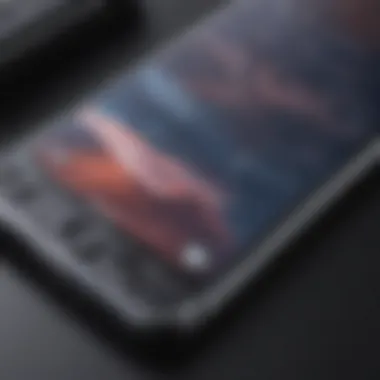
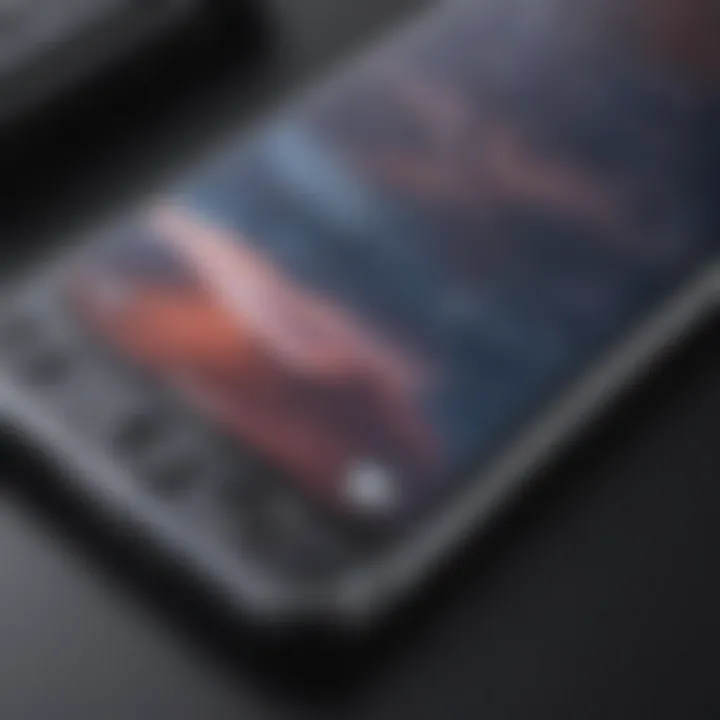
- Performance: Newer models like the iPhone 12 offer faster processors, which improve multitasking and overall functionality. This speed can enhance productivity, especially for users who rely on their phones for work.
- Camera Quality: Camera technology has advanced significantly in recent years. The iPhone 12 boasts improved camera systems, offering better low-light photography and advanced image processing.
- Software Support: Apple tends to provide software updates for newer devices for a longer period. By upgrading, users ensure they have access to the latest features and security updates.
- 5G Connectivity: With the introduction of 5G, using an iPhone 12 enables faster download and upload speeds, which is becoming increasingly important as more applications and services rely on high-speed internet.
In short, the importance of upgrading lies in improved functionality, compatibility with modern network technologies, and prolonged software support.
An Overview of iPhone Features
The iPhone 12 comes with features that mark a considerable upgrade over the iPhone 7. Some of the notable features include:
- Super Retina XDR Display: This OLED display provides vibrant color and contrast, enhancing video consumption and functionality.
- A14 Bionic Chip: The iPhone 12 is powered by Apple's A14 chip, which not only enhances speed but also improves energy efficiency. This means better performance without sacrificing battery life.
- MagSafe Technology: This feature allows for easy attachment of accessories and provides fast wireless charging options that were not available with previous models.
- Enhanced Camera Systems: The dual-camera system on the iPhone 12 includes Night mode, Deep Fusion, and improved HDR processing, offering users greater versatility in photography.
"Upgrading to the iPhone 12 is not just about enjoying new features; it is about fully utilizing potential that previous devices could not support."
Such advancements beckon users to not only upgrade but to understand what they are gaining in terms of technology and usability.
Comparing iPhone and iPhone Specifications
Understanding the differences between the iPhone 7 and the iPhone 12 is essential for anyone contemplating an upgrade. This section breaks down the specifications of both models to illustrate how advancements in technology and design have transformed the user experience. Evaluating specifications can help determine whether the enhancements in the newer model justify the switch. Key areas of focus include design, performance, and camera capabilities, all of which contribute to a more dynamic usage experience.
Physical Design Changes
The iPhone 12 introduces significant design changes compared to the iPhone 7. While the iPhone 7 features a rounded and more traditional design, the iPhone 12 embraces a flat-edge aesthetic reminiscent of the iPhone 5. The materials used are also upgraded; the iPhone 12 showcases a Ceramic Shield front cover, which Apple claims provides four times better drop performance than its predecessor. Additionally, the iPhone 12 is thinner and lighter, despite being made from more advanced materials. This shift in physical appearance not only enhances the phone's durability but also contributes to a more modern look that appeals to many users today.
Performance Enhancements in iPhone
Performance is one of the standout areas where the iPhone 12 significantly outperforms the iPhone 7. Equipped with the A14 Bionic chip, the iPhone 12 offers faster processing speeds and better energy efficiency. In real-world usage, this translates to quicker app loading times, smoother gaming experiences, and improved multitasking capabilities. In contrast, the iPhone 7, although competent with its A10 Fusion chip, struggles to keep up with high-demand applications and tasks. The difference in performance is especially noticeable when accessing graphics-intensive games or applications, where the iPhone 12 showcases its superior power and efficiency.
Camera Capabilities: A Side-by-Side
Camera technology has evolved considerably in recent years, and the comparison between the iPhone 7 and iPhone 12 highlights these advancements. The iPhone 12 features a dual-camera system that allows for Night mode, Deep Fusion, and exceptional low-light performance. Users can take significantly clearer photos in less-than-ideal lighting conditions. The iPhone 7, on the other hand, houses a single 12-megapixel camera that lacks these advanced capabilities. While the iPhone 7 produces decent images, particularly in well-lit situations, it cannot match the versatility and quality offered by the iPhone 12's camera system. A deeper exploration of the camera specs reveals improvements in image processing and enhanced video recording options, further solidifying the iPhone 12 as a superior choice for photography enthusiasts.
"Moving from iPhone 7 to iPhone 12 means upgrading not just the phone's capabilities but also enhancing the overall user experience."
The decision to upgrade from the iPhone 7 to iPhone 12 involves weighing these specific enhancements against the user’s needs and preferences. The differences observed in design, performance, and camera functionalities form a compelling case for making a transition to the iPhone 12.
Key Features of iPhone
The iPhone 12 includes crucial enhancements over its predecessors. Understanding these key features is essential for anyone considering an upgrade from the iPhone 7. These advancements not only improve user experience but also align with the evolving demands of modern smartphone technology. Let’s delve into three standout features: 5G connectivity, display improvements, and battery life enhancements.
5G Connectivity
One of the most significant upgrades with the iPhone 12 is the introduction of 5G connectivity. This technology is becoming standard across many devices. With 5G, users can expect faster download and upload speeds compared to the older 4G LTE. This is particularly important as more apps and services become data-intensive.
5G allows for smoother streaming, quicker downloads, and an overall improved online experience. Whether you are watching high-definition videos or participating in video calls, the improvements are tangible. However, it is essential to note that 5G availability may depend on your location and carrier. Planning to access these high speeds necessitates ensuring your area supports 5G coverage.
Display Improvements: Super Retina XDR
In terms of display, the iPhone 12 offers a Super Retina XDR display. This enhancement provides a sharper, clearer picture with more vibrant colors. The resolution is higher than that of the iPhone 7, making everything from photos to videos look more striking and immersive. The OLED technology used means deeper blacks and brighter whites, creating better contrast in various lighting conditions.
Users who enjoy media consumption will find this upgrade beneficial. The display’s wide color support enhances the viewing experience, making it more enjoyable to scroll through your photo library or watch your favorite shows. Also, the increased brightness level means usability is more reliable in direct sunlight, something that can be an issue with less advanced displays.
Battery Life and Charging Options
Battery life is always a priority for smartphone users. The iPhone 12 sees an enhancement in battery efficiency. Its optimized power management allows users to get more out of a single charge compared to the iPhone 7. This means that even with increased performance and a bright display, the iPhone 12 efficiently balances power consumption.
With respect to charging, the iPhone 12 offers new options like MagSafe accessories. This introduces a new way to charge the device wirelessly, using magnets to align the charger perfectly. This is both convenient and reduces wear on the charging port. The adaptation of fast charging is another important feature, allowing users to get back to using their phones quickly when low on power.
In summary, these key features of the iPhone 12 enhance its performance significantly compared to the iPhone 7. 5G connectivity opens doors to faster internet experiences. The Super Retina XDR display transforms media consumption quality, while improved battery life and innovative charging options make the device more user-friendly. Evaluating these enhancements will certainly provide a compelling case for upgrading.
User Experience Transitioning from iPhone to iPhone
Transitioning from the iPhone 7 to the iPhone 12 is a significant step that entails more than just acquiring a newer device. The iPhone 12 introduces a slew of new features and functionalities that enhance user experience and performance considerably. Understanding how to adapt to these changes is crucial for users aiming to maximize the potential of their new device. This section will explore the learning curve associated with new features and the importance of software compatibility and updates.
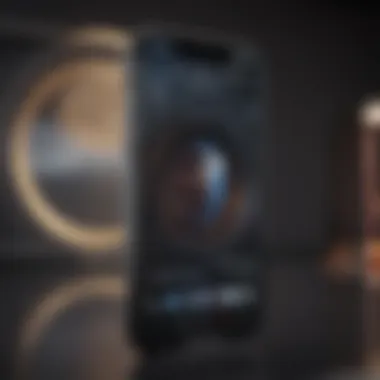

Learning Curve: Adapting to New Features
When upgrading, users will encounter various new features on the iPhone 12. These include 5G capability, enhanced photography options, and a significant upgrade in display quality. The design has also shifted, presenting a more modern aesthetic that differs from the iPhone 7.
To ease into these changes, users should take time to familiarize themselves with the interface and the new capabilities of the iPhone 12. For instance, trying out the camera's night mode or the new photographic styles can be daunting without exploration. Tutorials, available both on Apple's website and YouTube, provide a wealth of knowledge on these enhancements.
Additionally, the iOS experience may feel slightly different due to the newer version installed on the iPhone 12. Navigating through settings and adjusting personal preferences will likely require some adjustments for former iPhone 7 users.
- Key Adaptations:
- Explore new camera features and settings.
- Learn how to utilize 5G benefits effectively.
- Adjust to the Super Retina XDR display settings.
Software Compatibility and Updates
A crucial aspect of the iPhone experience is its operating system. With every new iteration of the iPhone, Apple introduces updates that enhance functionality and security. The iPhone 12 runs on a newer version of iOS than the iPhone 7, which means some applications and settings may operate differently.
Staying updated is essential. Each update brings optimizations that can improve device performance and security. Former iPhone 7 users may notice that certain apps run better on the newer hardware. It is advisable to regularly check for updates and take advantage of available features that accompany them.
Notably, the support for certain older applications may diminish as developers update their software for new standards. Therefore, checking app compatibility before migrating data is prudent.
"Transitioning to a newer iPhone may seem challenging at first, but with careful exploration, users can unlock new features and ensure a seamless experience."
Ultimately, adapting to the iPhone 12 from an older model like the iPhone 7 can be enriching. By embracing the new features and ensuring software compatibility, users enhance their mobile experience and fully utilize the advancement in technology.
Data Migration Essentials
The process of upgrading from an iPhone 7 to an iPhone 12 can seem daunting at first glance. One central aspect of this transition is data migration. Effectively transferring your data is essential for maintaining continuity and ensuring a smooth user experience. From photos to apps, your data contains significant personal and professional value. Knowing how to manage this process efficiently can save time and reduce stress.
Options for Data Transfer
When upgrading to an iPhone 12, several methods exist for transferring your data. Each method has distinct advantages that cater to different user needs.
- iCloud Transfer: This method leverages Apple’s cloud service to back up existing data and restore it to the new device. It requires a stable internet connection and sufficient iCloud storage space. You can set this up by signing into your iCloud account on the iPhone 7, making sure the necessary data categories are backed up, and then selecting the option to restore data during the initial setup of the iPhone 12.
- Direct Transfer: If both devices are running iOS 12.4 or later, you can opt for a direct transfer via Wi-Fi or a Lightning cable. This method is often faster and doesn’t require iCloud storage but needs both devices nearby and fully charged.
- iTunes/Finder Backup: For those who prefer using computers, backing up the iPhone 7 via iTunes (or Finder on macOS Catalina and later) is a reliable option. After backing up, you can restore the data onto the iPhone 12 by connecting it to the same computer.
Backing Up Your iPhone
Before executing any data transfer, a backup of your iPhone 7 is critical. Various options exist, allowing users to choose based on preference and convenience.
- iCloud Backup:
- iTunes/Finder Backup:
- Third-Party Software: If preferred, some users consider third-party applications for backing up their data. Make sure to use reputable software to avoid risks.
- Go to Settings > [your name] > iCloud > iCloud Backup.
- Enable iCloud Backup, then select Back Up Now. Ensure the backup completes before proceeding with other steps.
- Connect your iPhone 7 to your computer.
- Launch iTunes or Finder and select your device.
- Click on Back Up Now. You can also choose to encrypt your backup for added security.
Restoring Data on iPhone
After backing up, you can restore your data on the new iPhone 12. This process can be straightforward if planned correctly. There are specific methods based on your initial backup choice:
- iCloud Restore: When setting up the iPhone 12, after choosing your language and region, select Restore from iCloud Backup. Log in with the same Apple ID and choose the backup you created from your iPhone 7.
- Direct Transfer: If conducted via direct transfer, simply follow the prompt on the screen during the setup phase. Ensure both devices are connected and wait for the process to complete.
- iTunes/Finder Restore: Connect the iPhone 12 to the computer with your backup. Open iTunes or Finder, select your new device, and click on Restore Backup. Choose the most recent backup of iPhone 7.
"An efficient data migration not only saves time but ensures that crucial information is not lost during the upgrade process."
Managing data migration efficiently requires understanding your options and choosing the right strategy based on your needs, preferences, and resources. Keeping your data secure and accessible is vital for a seamless transition to the new iPhone 12.
Financial Considerations for Upgrading
Upgrading from an older smartphone such as the iPhone 7 to a newer model like the iPhone 12 requires careful financial planning. This section explores critical financial elements that influence the decision to upgrade. Understanding the costs associated, including trade-in values and budgeting, can help ensure a smooth transition without financial strain.
Assessing Trade-in Values


One essential aspect of upgrading to the iPhone 12 is the potential trade-in value for the iPhone 7. Companies like Apple provide trade-in programs, which can reduce the overall cost of the new device. To assess trade-in values, users should consider the following:
- Device Condition: The physical state of the iPhone 7 significantly impacts its value. A well-maintained phone will receive a higher trade-in price compared to one with scratches or battery issues.
- Market Demand: Prices can fluctuate based on demand for older models. Checking platforms such as eBay or specialized resellers may provide insights into current market trends.
- Manufacturer Trade-in Programs: Apple’s trade-in program offers an easy route to get credit toward a new purchase. Users can simply enter the device’s details on Apple's website for an estimate.
Overall, assessing trade-in values is crucial. Taking time to research and ensure that the highest possible trade-in value is obtained can significantly ease the upgrade process financially.
Budgeting for the iPhone
Once trade-in values are assessed, the next step is budgeting for the iPhone 12 itself. Understanding the full cost implications helps in making informed decisions. Here are important points to consider:
- Retail Price: The iPhone 12 has a retail price that varies based on storage options. Knowing the pricing structure of the iPhone 12 can help users select the model that fits their financial plans.
- Additional Costs: Apart from the device itself, consider costs related to accessories. Items such as protective cases, screen protectors, and charging accessories often add to the overall expense.
- Monthly Payment Plans: Many carriers offer financing plans that allow users to pay for the device in installments. Understanding the terms of these plans is essential to know how they fit into monthly budgets.
Using a simple budgeting spreadsheet that lists expected costs and potential trade-in values can provide clarity. Well-planned finances can not only make upgrading an iPhone easy but also preserve overall financial health.
"Budgeting is not just about saving money; it's about having control of your financial destiny."
Accessories and Compatibility
In an era where the right accessories can enhance your device's performance and longevity, understanding accessories and compatibility is key when upgrading from the iPhone 7 to the iPhone 12. Each generation of Apple’s smartphones brings improvements, and accessories must align with these innovations to ensure optimal user experience.
When considering the iPhone 12, it is important to recognize changes in design, specifications, and functionalities compared to the iPhone 7 and how these translate to accessory compatibility. The accessories you may have for your iPhone 7 may not function correctly or fit well with your new device.
Case and Screen Protector Considerations
Selecting the right case and screen protector is critical after upgrading to the iPhone 12. The iPhone 12 sports a flat-edge design, which differs significantly from the curved edges of the iPhone 7.
Factors to consider:
- Materials: Cases vary in materials like silicone, leather, or plastic. Identify what offers the best protection without sacrificing aesthetics.
- Functionality: Some cases come with features like card slots or kickstands. Think about your daily needs.
- Screen Protectors: Given the iPhone 12's Ceramic Shield front cover, cases that offer raised edges can provide additional protection against scratches and drops. Choose a glass or film screen protector tailored for the iPhone 12's dimensions.
Tip: Ensure any case or screen protector explicitly states compatibility with iPhone 12 to avoid mismatches.
Charging Accessories for iPhone
With the transition to the iPhone 12, there are notable evolution in charging capabilities. The iPhone 12 supports MagSafe technology, allowing for magnetic alignment with compatible chargers and accessories.
Important charging accessories:
- MagSafe Charger: This is a magnetic charger designed specifically for iPhone 12 and provides optimal charging speed.
- Lightning to USB-C Cable: The iPhone 12 comes without a charger in the box. A correct Lightning to USB-C cable is necessary for fast charging.
- Wireless Chargers: Ensure any wireless chargers support Qi standards to work efficiently with iPhone 12.
By ensuring the right accessories, users can enhance their overall experience with the iPhone 12. Consider these aspects carefully to maximize the functionality and protection of your new device.
End: The Value of Upgrading
Upgrading to a new device often calls for careful consideration. The transition from an iPhone 7 to an iPhone 12 is no exception. This upgrade may involve both emotional and practical aspects. For many users, the iPhone 12 offers compelling features that make it a worthwhile investment. Understanding these reasons is crucial for anyone contemplating this switch.
The iPhone 12 introduces several advancements that vastly improve user experience. Upgrading ensures access to improved camera technology, enhanced display features, and the reliability of 5G connectivity. These factors contribute significantly to usability in today’s fast-paced digital environment. Additionally, Apple regularly updates its devices with software enhancements, ensuring that the latest security features and applications remain functional. This is often not the case with older models such as the iPhone 7.
Another consideration is the longevity and resale value of newer models. As technology evolves rapidly, the iPhone 12 is built to remain relevant longer than the iPhone 7. Users can benefit from a stronger resale value if they choose to upgrade in the future once they are ready. Therefore, it is worthwhile to assess the financial aspects of this decision as well.
Reflections on the Upgrade Process
Transitioning from an older iPhone model to a newer one can be an enlightening journey. Many users often find themselves re-evaluating their relationship with technology. The upgrade process provides an opportunity for reflection, as one considers how their needs have changed over the years. Features that seemed unnecessary a few years ago may now be vital.
The migration of data should be approached methodically. Users familiar with iCloud, for example, will find the process smooth. Programs, contacts, and photos can be easily transitioned. Careful planning during this phase reduces frustrations often associated with upgrades.
For those hesitant about the upgrade, it can help to remember that technology is designed to improve daily life. While the iPhone 7 served faithfully for years, experiencing the capabilities of the iPhone 12 can provide an appreciation for how much more is possible.
Final Thoughts on iPhone Benefits
Ultimately, choosing to upgrade to the iPhone 12 opens a world of enhanced features. The benefits extend beyond the hardware itself. Users gain access to richer applications, improved gaming performance, and innovative features like MagSafe accessories. The design itself is not just about aesthetics but functionality which can enhance everyday tasks.
It's crucial to reflect on the long-term value. The ability to engage in new experiences, both personally and professionally, outweighs the temporary discomfort associated with switching devices. Investing in an iPhone 12 means prioritizing future capabilities that align with technological advancements.
"In the world of technology, progress is relentless and so should be our engagement with it."
In sum, upgrading from an iPhone 7 to an iPhone 12 is more than just a change of devices; it is about embracing a trajectory of enhanced capabilities for the future.



